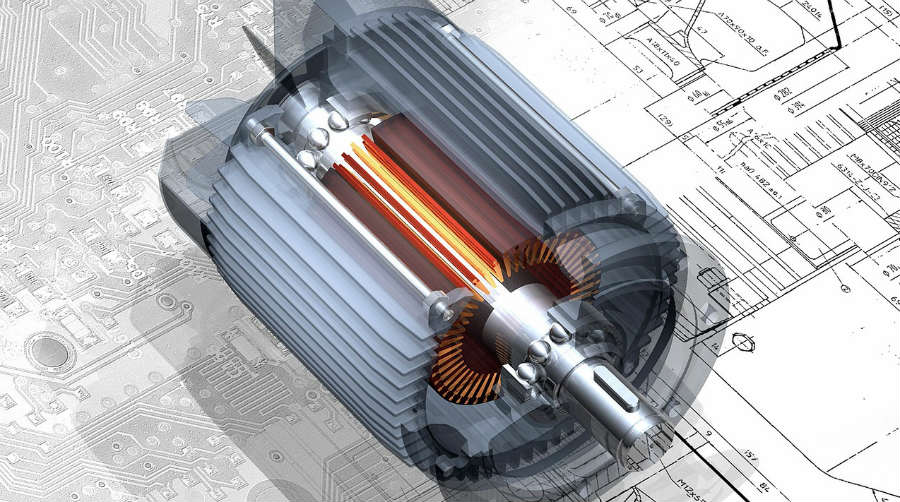An automatic transmission uses fluid to lubricate its internal clutches, gears, and bearings. It incorporates a torque converter as a viscous coupling that uses transmission fluid to transfer engine power to the transmission input shaft.
It also uses the fluid under pressure to operate pistons in the valve body and to engage clutches. All this work generates heat, so there is usually a transmission cooler to keep the fluid at an optimum temperature.
Transmission fluid inevitably ages and breaks down, and picks up debris and contaminants.
Average Cost of Transmission Flush
The cost of transmission flush varies from about $100 to $300. Where the job is done makes a difference to the cost, and how much fluid the vehicle requires makes a difference as well.
Some vehicles have a transmission fluid capacity of as much as 20 quarts, and if a vehicle-specific fluid is necessary, that can bring the transmission service cost up to the high end of the range.
If there is a transmission filter to be replaced that would be an additional cost.
Transmission Flushing Service

Changing the transmission fluid is a basic service on any vehicle’s maintenance schedule. There are a couple of ways to do that.
Most well-equipped shops will recommend a transmission flush which is done by hooking a machine to the transmission cooler lines (usually). Then, new fluid is pumped in and old fluid is pumped out; allowing for almost all of the fluid to be replaced.
The alternative is a drain and fill, which involves simply removing a drain plug and draining out old fluid, then topping up the transmission with new fluid. The drawback to this is that it only removes about half of the old fluid, as much of it is trapped in the torque converter and elsewhere.
Either way the fluid is serviced, it’s a very good idea to also replace the transmission filter if there is one. That is done by dropping the transmission pan which also needs a new gasket.
More common nowadays are transmission case designs that don’t have a pan or a replaceable filter; simply a drain plug. There are also some transmissions that have an external filter on a cooler line or screwed onto the transmission housing.
Manufacturer’s Recommendations
Every manufacturer has at least an inspection interval for automatic transmission fluid. Usually, it’s at about every 12,000 to 15,000 miles.
Most actual service intervals are between 60,000 and 100,000 miles in normal service, though some are longer, and some manufacturers specify only inspections and then, service as needed.
Transmission fluid wears at different rates depending on how a vehicle is driven, outside temperatures, load conditions, etc., and a vehicle that sees hard use may need the transmission served every 15,000 to 40,000 miles. CVT transmissions are also harder on the fluid, and towing or carrying heavy loads also causes wear.
Generally speaking, if transmission fluid appears clean or only slightly discolored, it’s ok. If it’s dark or thickened, it should be replaced. If it smells burnt, it should also be replaced.
Erring on the safe side is also recommended as there is no harm in replacing fluid before it needs to be replaced. The cleaner fluid reduces internal wear in the transmission which is one of the more expensive and difficult to service parts of the vehicle.
Flush Versus Drain and Fill
Most vehicle manufacturers recommend transmission fluid replacement without specifying how to go about it. However, most dealerships use a flush machine when doing the scheduled services on the transmission in order to completely replace the fluid.
There have been some anecdotal warnings against flushing the fluid on a worn transmission for years. One theory is that the flushing operation dislodges sludge and particles which can then clog passages.
Another is that old gritty transmission fluid somehow improves the operation of the clutches, and replacing the old fluid leads to transmission slippage. Neither of these claims stands up to scrutiny.
Flushing a transmission moves fluid in the same way as the oil pump does; no problems should be expected. And if the gritty old transmission fluid is keeping the clutches working, then, adding more grit would be a solution to a slipping transmission; which it isn’t, obviously.
A couple of things may be behind the warnings. One is that transmission service is frequently neglected until a transmission shows symptoms of failure. With this, flushing the fluid is something that might be tried.
That seldom improves already worn or failed parts but is sometimes a convenient scapegoat after the service when the real problem is age or lack of maintenance. Another is that it is possible on some flush machines to set the fluid pressure too high and then, damage seals in the transmission.
If the job is done competently, this shouldn’t ever be an issue. This is because it’s simple to set the machine’s pressure to be less than the transmission’s normal operating pressures.
In any case, the primary advantage of a transmission flush over a drain and fill is simply that it replaces more fluid. This is more of an issue if the fluid has been badly neglected and less of an issue if it has been serviced regularly.
If the fluid is in very bad shape and a flush isn’t done, it’s still not such a good idea to leave most of the old fluid in the transmission. Sometimes, a drain and fill can be done twice in a row if necessary.
After the first time, the transmission is topped off and run through the gears. Then, the fluid is drained again. The result of doing it twice is to replace ¾ of the old fluid rather than half, though, it is somewhat wasteful of both fluid and time.
Honda is the one manufacturer that doesn’t recommend flushing the transmission fluid. That is primarily because Honda uses its own special fluid which doesn’t tolerate contamination well.
A flush machine would have to be dedicated, as Honda-only in order to avoid cross-contamination of fluids. Besides, it’s generally safer and easier in practice to simply keep up on the maintenance and perform drain and fill services when necessary.


The more I read the more confusing. I have read much conflicting info re my 2013 Mercedes E350 32000 miles. The MB dealer gave me a notice that my car needs a transmission flush/service/filter at a cost of Nearly $1,000.00. Now I read on the internet that the cost should be between $387 & $446. I don’t have much faith in what the dealer tells me due to past experiences, but I would really like to know what the service I listed above really should cost & is it really necessary in the 1st place.
At 32,000 miles, “necessary” on any vehicle would depend on how the vehicle is driven. Short-distance city driving on a vehicle almost 10 years old would generally qualify for a service recommendation. If I were the tech and you haven’t serviced the transmission in that time-frame, I’d probably recommend it myself. As far as how to service it, as said in the article, it doesn’t matter a great deal. You could do a drain and fill and that would replace about half the fluid. You could do a flush and replace something over 3/4 of the fluid. Either way is good as long as the job is done right. It’s not rocket science.
The dealer or a German-car specialty shop is likely to do a competent job. But if you don’t trust the dealer, don’t do the work there; that’s basic advice. Even as a tech myself, if a customer doesn’t trust me or my shop I’d advise him to take his vehicle somewhere else. Call around for cost and check reviews and so forth, find a match somewhere.
I have a 2013 Mercedes E350. I just had it flushed at the dealer at 75,000 miles. It was about $575 if I remember correctly.